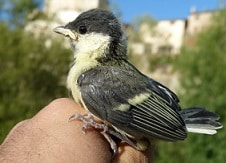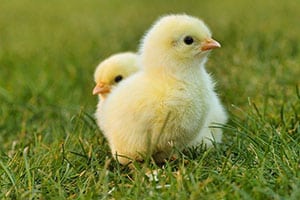 To understand what a down is, we must first define the concept of a feather . Feathers are horny structures that cover the body of birds, composed of a tube that is inserted into the skin and a shaft with barbels that protrudes.
To understand what a down is, we must first define the concept of a feather . Feathers are horny structures that cover the body of birds, composed of a tube that is inserted into the skin and a shaft with barbels that protrudes.
A down, in this framework, is a particular type of feather . It is a thin feather that is found below the contour feathers (that is, the outer plumage).
The downs are characterized by having an axis or rachis of little extension, whose barbels are not intertwined. Thanks to the down, the animals have an insulating layer that provides them protection against inclement weather.
In the case of waterfowl, down contributes to buoyancy . In certain species, in addition, females pluck down feathers to form their nests and to camouflage their eggs.
Most birds, in their first development, have their bodies covered in natal down . There are chickens that, in fact, already have feathers when the egg hatches. The body down , meanwhile, is that which is located below the contour feathers in adult specimens.
Due to its insulating properties, down has been used by humans since ancient times. These feathers are often used to make blankets and coats and fill mattresses , for example.
In some regions, finally, the marker is called a marker : a writing instrument also known as a marker . The marker creates a thick line with a brush or felt brush and is ideal for writing on surfaces other than paper.
 The term rachis is mentioned above, which we can simply define as a flexible axis from which the so-called barbs , parallel branches that form part of the vexil or standard , the laminar part of the feather, start. The beards also have a perpendicular branch into barbules or barbels , which in turn give rise to the crochets , whose function is to join those of the closest barbels.
The term rachis is mentioned above, which we can simply define as a flexible axis from which the so-called barbs , parallel branches that form part of the vexil or standard , the laminar part of the feather, start. The beards also have a perpendicular branch into barbules or barbels , which in turn give rise to the crochets , whose function is to join those of the closest barbels.
The presence or absence of rachis is one of the aspects that we must take into account when classifying the different types of feathers. For example, contour feathers (also called typical ) have a well-developed rachis; semi-feathers , on the other hand, have a rachis whose extension exceeds their longest beard ; The bristles , on the other hand, have a rigid rachis with few barbs that are located mainly at its base. It is worth mentioning that down does not always have rachises; In fact, if they have it, it is of little extension, their beards are soft and messy, that is, they do not intertwine.
Natural thermal insulation is essential in animals, and down stands out for this function in adult birds. Thanks to a series of paleontological findings, today we know that some species of dinosaurs had parts of their bodies covered in feathers, just like birds. In fact, studies indicate that their characteristics brought them closer to down than to the typical feather.
The structure of down is considered the simplest of all that we can find in modern birds. This makes a lot of sense if we remember that it covers the body of many species of birds from birth. In another paragraph we mentioned that their beards are messy, and this is because their chins do not have hooks with which to hold on to others. This gives small chickens, for example, their characteristic appearance, which in a human being we would associate with a lack of concern for physical appearance, which we would describe as "unkempt."
